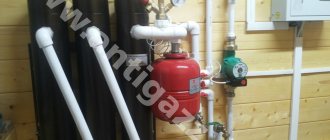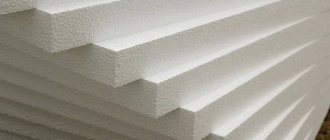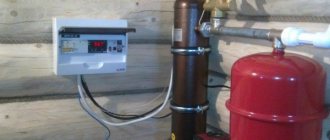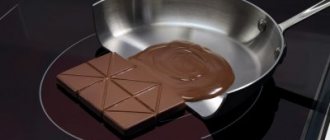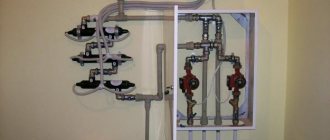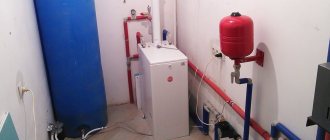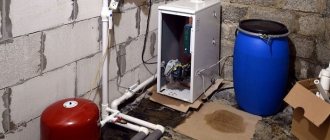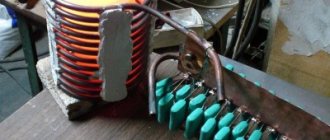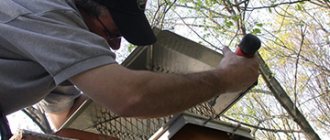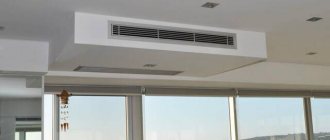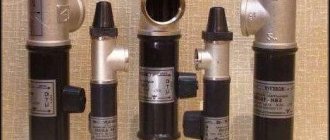In modern heating systems, more advanced equipment is used to minimize economic costs and increase the efficiency of installations. An induction boiler for a private home is an excellent alternative to classic models with heating elements.
The main advantage of induction boilers is the rapid heating of the coolant, so these models, in addition to heating, are used for heating water.
Boiler design VIN
Vortex induction heaters (VIN) are not produced in the city of Izhevsk. These devices became known and popular in the CIS countries. Apparently, due to its simplicity of design and reliable operation.
The boiler consists of:
• Metal body.
• Induction coil, it is located in the inner chamber of a hollow cylinder. A metal pipe is inserted into the hole of the cylinder, acting as a core.
• Two pipes for cold water inlet and hot water outlet.
• Quartz sand.
• Control cabinet.
• Temperature sensor.
• Safety system.
Principle of operation
The work is based on the principle of electromagnetic induction:
- After the device is started, an electromagnetic field is generated. In this case, the core warms up to a temperature of 75 degrees.
- Water is supplied through the inlet pipes to the core heat exchanger.
- The coolant heated to a given value is supplied to the pipe system through the outlet pipes.
For heating large and multi-storey buildings, the presence of a circulation pump in the system is mandatory.
Induction heating is the fastest of all currently available.
Models consist of three main nodes (layers):
- Internal - directly the core. Manufactured in the form of steel pipes.
- Insulation. Necessary to reduce heat loss to the unit.
- Outer – body. Made of metal.
The coolant used is water or antifreeze.
Boiler marking
The plant produced several modifications of boilers that use electromagnetic induction for their operation. They all have different powers.
The numbers after the abbreviation indicate the boiler power. A boiler with a minimum power of 3 kW is capable of heating an area of 40 square meters, a device consuming 80 kW will create heat in a building of 900 m2.
Equipment options
Almost all manufacturers offer induction boilers in the power range from 3 to 80 kW in two types of configurations:
- standard. Includes equipment for controlling the boiler (cabinet measuring 20x40 cm and a remote control that allows contactless control) and a temperature sensor.
- improved (VIP). In addition to the standard set, it contains a coolant flow sensor, a circulation pump and shut-off and control valves. The kit includes a boiler safety group - structural elements that protect against excess pressure in the system. Most often this is a system of a pressure gauge, a valve for releasing excess coolant and an air vent.
Vortex induction boiler VIN – 5
The boiler is used to heat private houses. Consumes 5,000 W. The body is metal, the thickness of the core walls is 10 mm, the coil is made of copper. Operates on 220 volts.
The boiler easily heats a room of 60 meters. The pipes have a diameter of 25 millimeters. Weight is 27 kilograms. Dimensions 675 x 133. The first number is the height, the second is the diameter.
Advantages
- Economical. Compared to similar models, operating costs are 20% less. The efficiency of the induction unit is more than 97%, which is higher than that of classical models (due to the fact that heat loss for heating the induction coil is minimal). Electricity costs for heat production are significantly less than when burning coal or gas.
- Fast heating of the coolant.
- Durability. Subject to operating rules and regular technical inspections, induction boilers can last up to 40 years. Due to the absence of moving joints, there is no wear of parts. The use of copper increases the service life of the winding. In modern models, the core is made of reinforced materials that can operate in aggressive environments for several decades.
It is important to know! The service life depends on the quality of the transistors. Well-known brands offer a trouble-free operation guarantee of up to 10 years.
- No scale. Due to constant vibration, deposits cannot linger on the surface of devices even if the coolant is oversaturated with lime. There are always water bubbles on the core that repel scale particles.
- Compactness. The dimensions of induction boilers allow them to be installed in limited spaces. They do not require constant maintenance, a separate room and the construction of a chimney.
- Silence. Induction models do not create acoustic vibrations (circulation pumps make noise). Important! There are many circulation pumps whose operation does not create additional noise.
- Safety. To ensure correct operation and avoid emergency situations, RCDs and automatic circuit breakers are used, and special automatic shutdown devices are installed on boiler bodies.
- Fire safety. Unlike gas and solid fuel boilers, there is no open fire when operating induction boilers.
- Easy to install. With minimal skills in working with electrical appliances and handling, you can install the boiler yourself.
Advantages and disadvantages
The real advantages that induction boilers have for heating a home or industrial building are as follows:
- High, as with all water heating installations, operating efficiency is in the range of 97-98%.
- Durability due to the absence of moving parts and simplicity of design.
- Small dimensions allowing heating equipment to be placed in a room of any size.
- High heating rate of the coolant and lack of inertia when it is turned off.
- Comfort during operation, an induction electric boiler does not require constant attention from the owner of the house, and the frequency of its maintenance depends entirely on the quality of the water used in the system.
Vortex heaters are supplied with automatic control kits, which makes it possible to connect heat generators with other climate systems at home.
Sectional view of the heater
This equipment also has disadvantages. The main one is the high cost, especially for heat generators of the Sibtekhnomash type. While using these units for industrial purposes is quite acceptable, induction heating of a private home may turn out to be unreasonably expensive.
The experience of practical use of vortex heaters by homeowners and maintenance personnel of service companies is not yet very extensive, but at the moment there are no significant complaints about the equipment.
Water heaters type "VIN"
The heart of the unit is a coil consisting of a large number of turns of insulated wire, and placed vertically in a cylindrical housing in the form of a vessel. A metal rod is inserted inside the coil. The housing is hermetically sealed at the top and bottom with welded lids, and the terminals for connection to the electrical network are brought out. Cold coolant enters the vessel through the lower pipe, which fills the entire space inside the body. Water heated to the required temperature goes into the heating system through the upper pipe.
Coolant heating circuit
Due to its design, when connected to the network, the heat generator constantly operates at full power, since it is irrational to supply the heating installation with additional voltage regulation devices. It is much easier to use cyclic heating and use automatic shutdown/on with a water temperature sensor. You just need to set the required temperature on the display of the remote electronic unit and it will heat the coolant to this temperature, turning off the water heating induction element when it is reached. After the time has passed and the water has cooled by a few degrees, the automation will turn on the heating again, this cycle will be repeated constantly.
Since the heat generator winding provides a single-phase connection with a supply voltage of 220 V, induction-type heating units are not produced with high power. The reason is that the current in the circuit is too high (over 50 amperes), it will require laying large cross-section cables, which in itself is very expensive. To increase power, it is enough to put three water heating units in a cascade and use a three-phase connection with a supply voltage of 380 V. Connect a separate phase to each device in the cascade; the photo shows a similar example of the operation of induction heating.
Heating with induction boilers
Design features of heaters of the “Sibtekhnomash” type Using the same effect of electromagnetic induction, another company develops and produces water heating devices of a slightly different design that deserves attention. The fact is that the electric field created by a multi-turn coil has a spatial shape and spreads from it in all directions. If in VIN units the coolant passes inside the coil, then the Sibtekhnomash induction boiler device provides a spiral-shaped heat exchanger located outside the winding, as shown in the figure.
The winding creates an alternating electric field around itself, eddy currents heat the turns of the heat exchanger pipe in which water moves. Coils with coils are assembled in a cascade of 3 pieces and attached to a common frame. Each of them is connected to a separate phase, the supply voltage is 380 V. The Sibtekhnomash design has several advantages:
- induction heaters have a separate, collapsible design;
- in the zone of action of the electric field there is an increased area of the heating surface and a larger amount of water due to the spiral circuit, which increases the heating rate;
- Heat exchanger piping is accessible for cleaning and maintenance.
An example of connecting an induction boiler
Despite the differences in the design of the heat generator, its operating efficiency is 98%, as in heaters of the “VIN” type, this efficiency value is declared by the manufacturer itself. The durability of the units in both cases is determined by the performance of the coils, or more precisely, by the service life of the winding and electrical insulation; manufacturers set this indicator within 30 years.
Specifications
The induction boiler is universal and connects to a regular 220 V electrical network supplying alternating current (frequency 50 Hz). There are models operating from a 380 V network.
Thermal performance depends on the power of the heater and varies from 2500 to 67400 Kcal/hour for various configurations. An increase in power, and, consequently, the potential size of the heated room, affects the price of the VIN. Boilers with a power of over 7 kW are a system of three heaters arranged in series.
Dimensions for single heaters (VIN-3, -5, -7/220 V) are most often indicated as structure height x diameter. A typical boiler with a diameter of 13.3 cm has a height of about 62 cm. The weight of the device is 25-30 kg. More powerful boilers can weigh up to 185 kg, which imposes certain restrictions on their wall placement.
The diameter of the inlet and outlet pipes is the same and, depending on the characteristics of the VIN and the manufacturer, is 23-32 mm.
